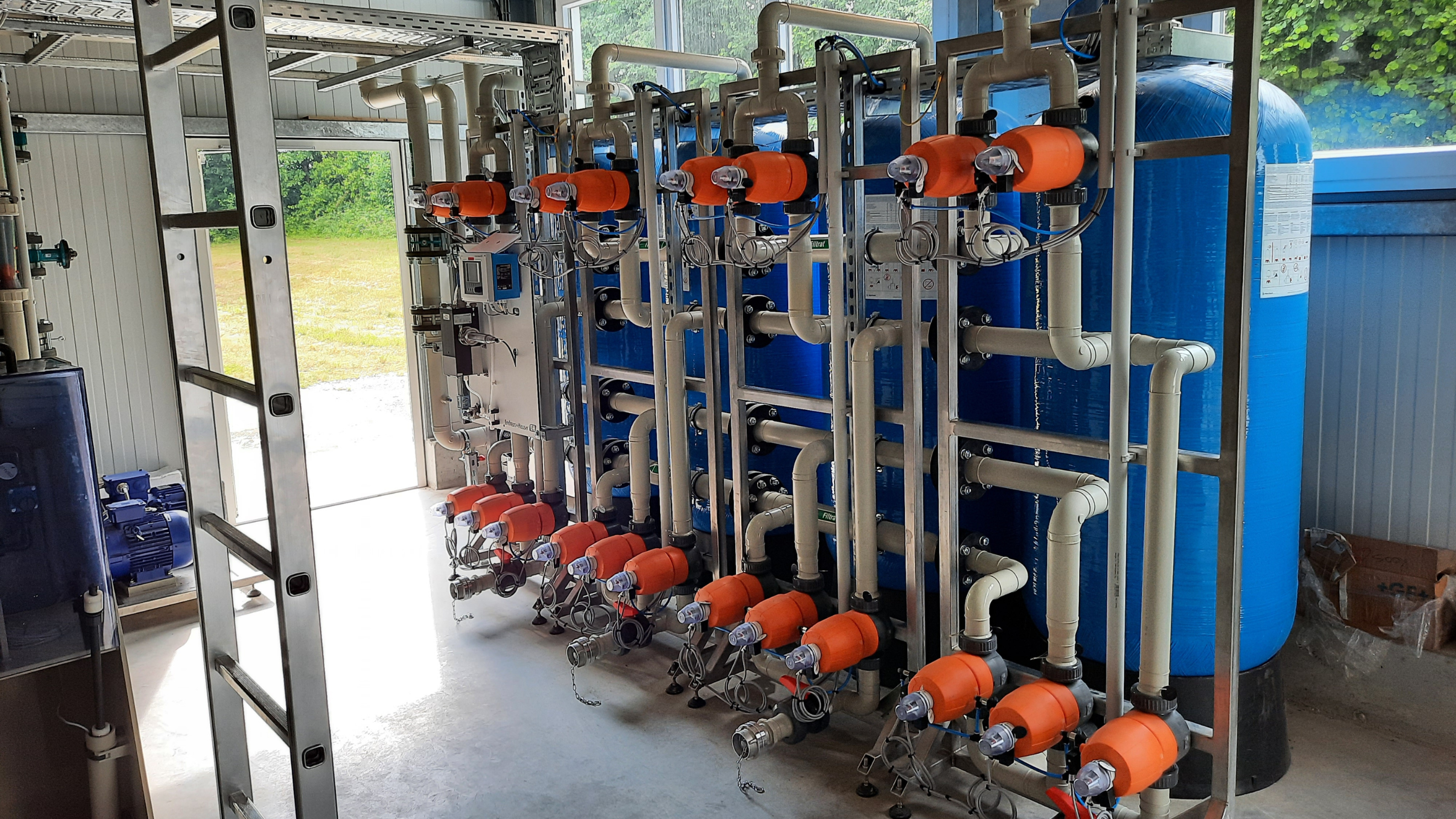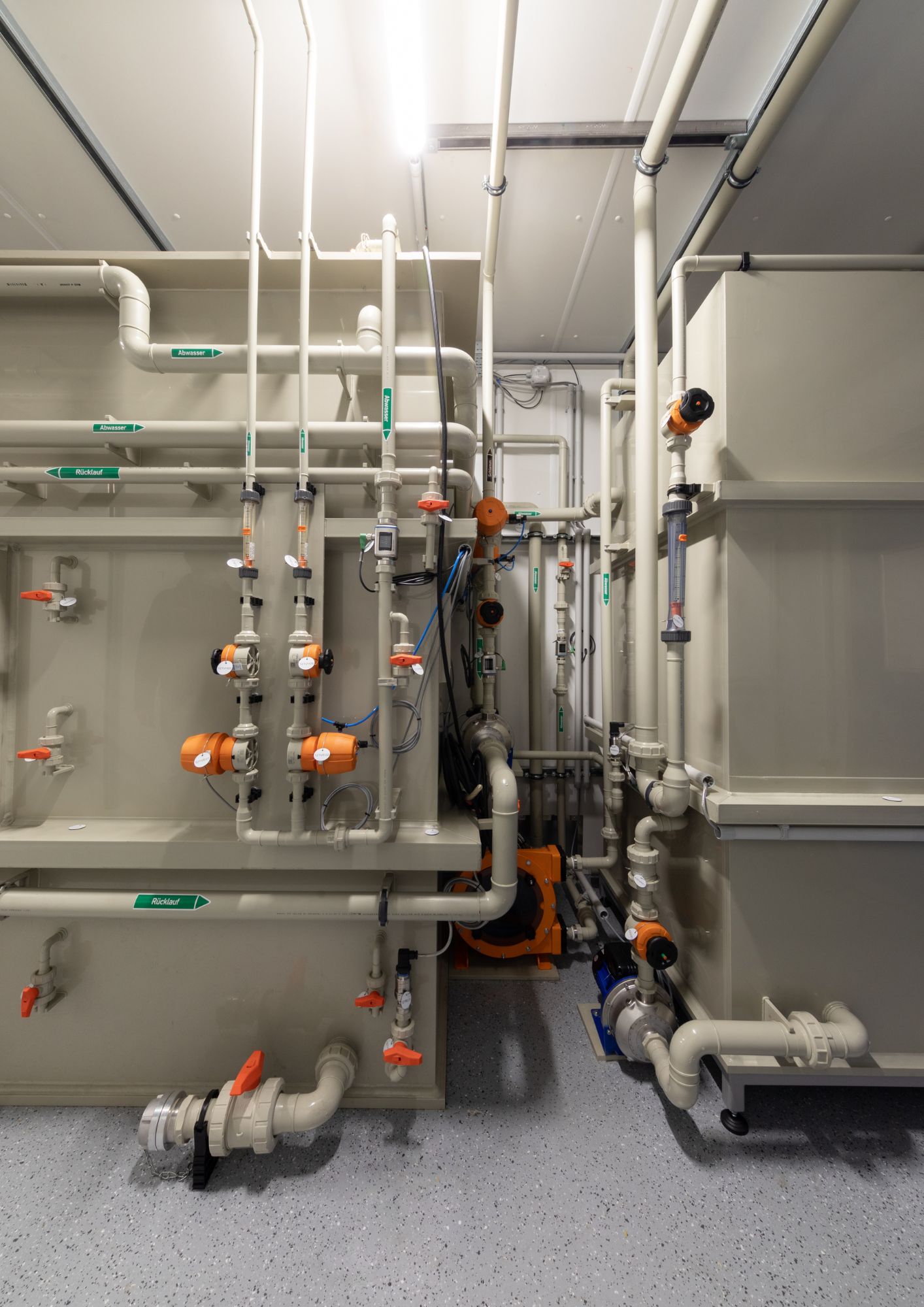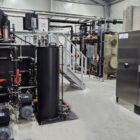The pneumatic valve is a central component in industrial water treatment and waste water treatment, which is operated by controlling compressed air. It is used for the targeted regulation, control or blocking of media flows such as water, waste water, process fluids or chemicals. These valves are indispensable in automated systems as they enable fast and precise operation with high reliability.
In this article, we take a detailed look at the design, function, types, areas of application and the technical advantages and challenges of pneumatic valves, always with a focus on practical applications in water and wastewater technology.
Table of contents
Design and function of a pneumatic valve
A pneumatic valve uses compressed air as the drive medium to move an internal mechanism that controls the flow of liquids or gases. The basic design includes the following components:
Valve body:
- Consists of corrosion-resistant materials such as stainless steel, plastic (e.g. PVC, PP) or brass.
- Contains the channels for the flow and seating surfaces for sealing.
Drive mechanism:
- A pneumatic piston or diaphragm that is moved by compressed air.
- This movement opens or closes the valve.
Tax chamber:
- Compressed air is supplied here to operate the drive.
Seals:
- Ensure that there are no leaks.
- Made from materials such as EPDM, FKM or PTFE, depending on the chemical resistance.
Connections:
- Inlet and outlet connections for the medium to be controlled.
- Connections for the control air supply.
Optional elements:
- Limit position switch: For feedback of the valve status.
- Solenoid valves: For controlling the control air.
Types of pneumatic valves
Pneumatic valves can be divided into different types, depending on their function and intended use:
Seat valves:
- Suitable for quick opening and closing.
- Application: Control of chemicals in dosing systems.
Diaphragm valves:
- Have a flexible membrane that opens or blocks the flow.
- Application: Preferred in water treatment due to its chemical resistance.
Ball valves with pneumatic actuator:
- Ball as a locking element that is opened or closed by rotation.
- Application: Use in pipe networks for water and waste water.
Slide valves:
- Movement of a plate or wedge for flow control.
- Application: For heavily contaminated wastewater or sludge.
Control valves:
- Enable precise control of the flow rate.
- Application: Control of process water flows.
Directional valves:
- Control the compressed air flow in the pneumatic circuit.
- Application: Indirect control of pneumatic components, e.g. in ventilation systems.

Photo: Our gravel and multi-layer filters (ALMA Fil) with pneumatically operated membrane valves
Areas of application for pneumatic valves in water and wastewater technology
- Control of backwash valves in sand, activated carbon or membrane filters.
- Optimization of cleaning efficiency through precise switching.
- Regulation of the flow of precipitants, flocculants or antiscalants.
- Use of chemically resistant diaphragm valves.
Aeration in biological treatment plants:
- Control of the air supply to ventilation elements.
- Precise control to optimize the oxygen input.
Reverse osmosis and membrane systems:
- Control of pre-treatment stages and concentrate discharges.
- Use of ball valves or control valves.
- Control of acid and alkali supply for pH value regulation.

Photo: Stacking container and batch reactor with pneumatically operated control valves at one of our research facilities, installed in the technical room container (ALMA MODUL)
Advantages of pneumatic valves
Fast switching times:
- Enable almost instantaneous operation.
- Important for dynamic processes such as backwashing.
Reliability:
- Mechanical simplicity minimizes the risk of failure.
- Particularly suitable for corrosive and abrasive environments.
Chemical resistance:
- Material selection enables use with aggressive media.
Automation capability:
- Easy to integrate into control systems (e.g. PLC controls).
- Feedback of the valve status via limit switches.
Compact design:
- Space-saving and can be flexibly integrated into existing systems.
Challenges and solutions
Compressed air quality:
- Contaminated compressed air can impair the function.
- Solution: Use of compressed air filters and dryers.
Material wear:
- High stress due to abrasive or chemical media.
- Solution: Use of high-quality materials such as PTFE or stainless steel.
Leakages:
- Can impair energy efficiency.
- Solution: Regular maintenance and replacement of seals.
Costs:
- Higher acquisition costs compared to manually operated valves.
- Solution: Long-term savings through reduced operating costs.
Conclusion
Pneumatic valves are essential components in industrial water and wastewater treatment. Their versatility, reliability and automation capability make them the preferred choice for numerous applications, from chemical dosing to sludge treatment. Careful selection, regular maintenance and optimization of compressed air quality ensure high operational reliability and cost-effectiveness. Pneumatic valves are therefore an indispensable component in modern water technology.
For further information on our products, please feel free to contact us at any time!








